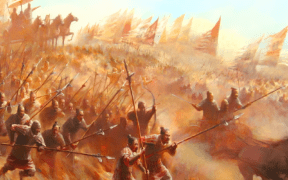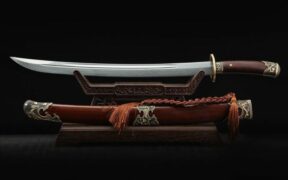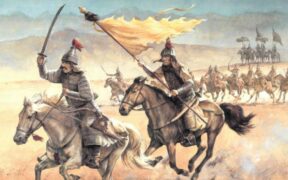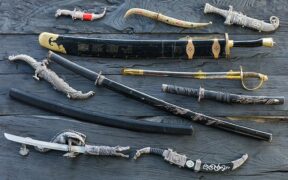8 Most Popular Types of Chinese Polearms
NO AI USED This Article has been written and edited by our team with no help of the AI
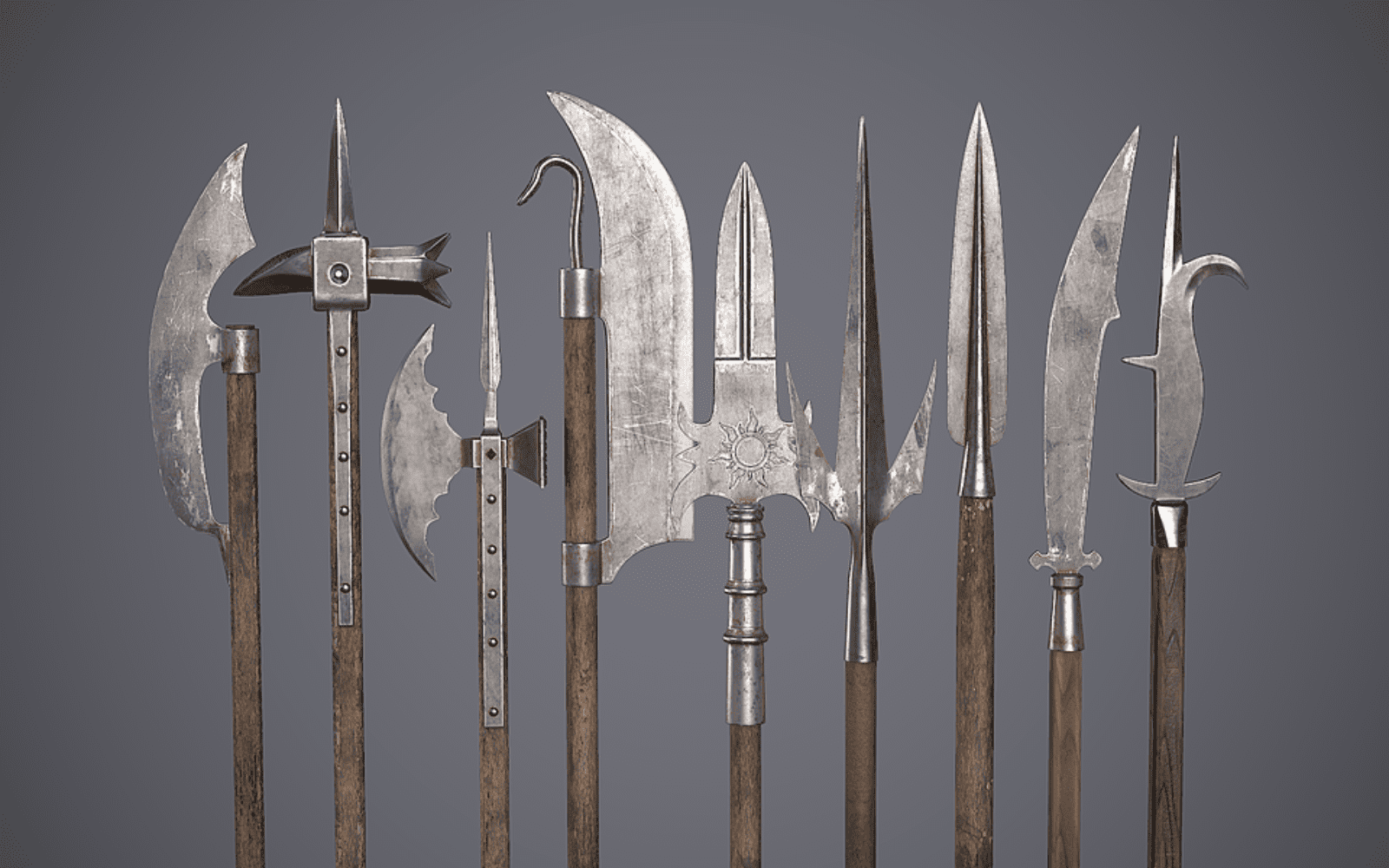
Chinese armies used a wide range of pole weapons designed for thrusting, cutting, or multifunctional purposes. Some of these polearms held symbolic significance, often associated with aristocrats, and continue to be used in Chinese martial arts today.
In this article, we will delve into the different types of Chinese polearms, highlighting their unique features and examining their roles in infantry and cavalry tactics on the battlefield and beyond.
What Exactly Is a Polearm?
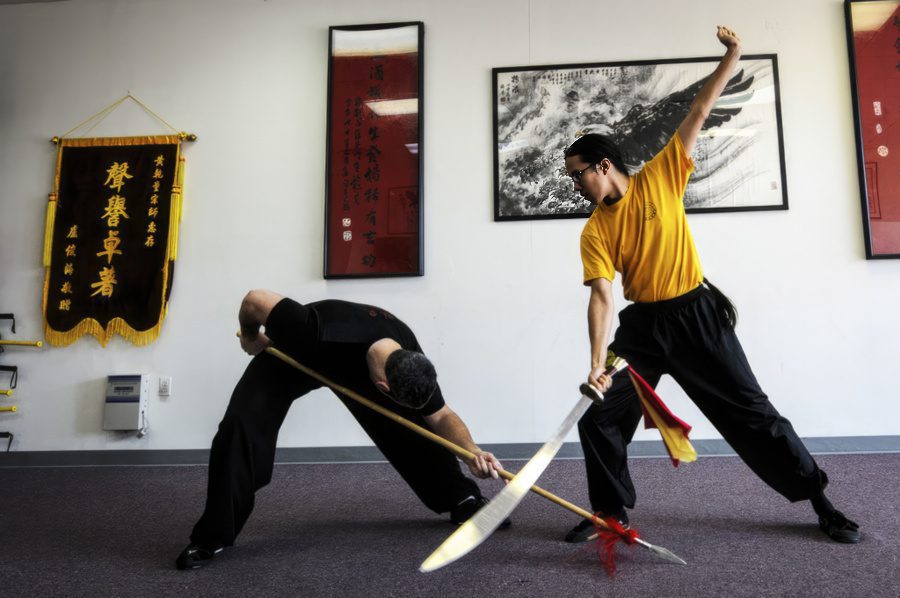
A polearm refers to any type of weapon that consists of a sharp blade attached to a long handle or shaft usually made of wood or metal. The length of the pole allowed the wielder to maintain distance from opponents while executing powerful thrusts and cuts, providing a tactical advantage in battle.
The Chinese developed various types of polearms, resulting in a wide range of designs, including spears, lances, pikes, dagger axes, glaives, and halberds. Additionally, the Chinese arsenal included several types of forks, tridents, and spades.
Types of Chinese Polearms and Their Historical Use
Categorizing Chinese polearms can be quite challenging, as they often do not conform to existing typologies. Many terms are historical, while those newly coined among martial artists and collectors may not correspond with traditional names.
1. Guandao

Guandao, 關刀 is a Chinese polearm with a large blade used on horseback that has the chopping power of a sword and the length of a spear. By the Qing dynasty, it was used by the Green Standard Army and martial artists.
An exceptionally large version, the wukedao (武科刀, military exam blade) was used for strength testing, training, and later served as a ceremonial weapon carried by high-ranked officials.
In modern times, the guandao is most associated with the Green Dragon Crescent Blade, Guan Yu’s weapon in the novel, Romance of the Three Kingdoms. In martial arts, it remains popular in Shaolin kung fu and Chen-style taijiquan.
- Design: Curved, scalloped blade mounted on a simple wooden pole
- Other names: Yanyuedao (偃月刀 / reclining moon blade), chunqiudao (春秋刀 / spring-autumn blade)
2. Qiang (Spear)
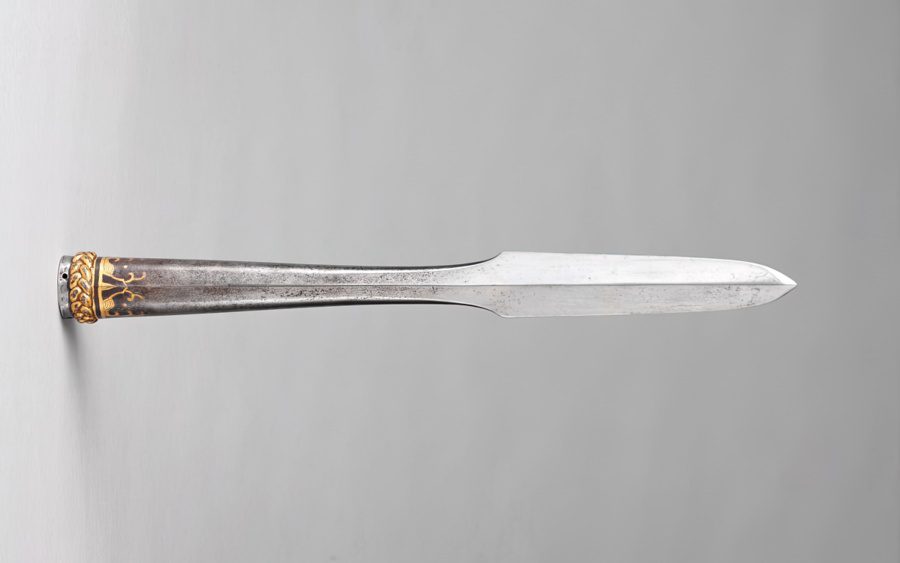
A spear is a long-shafted weapon designed for thrusting. The qiang, 槍 (Chinese spear) comes in various sizes and shapes. Wielded by both cavalry and infantry, it was more important on the battlefield than the sword due to its reach advantage.
The ancient Chinese spear manual, Chang Qiang Fa Xuan (長鎗法選), records various spear techniques. Jack Chen, an expert in ancient Chinese martial arts, says that these spears are typically quite long, measuring about 4 to 5 meters.
- Design: Varies, including leaf-like, hooked, sickle-like, and blazing fire forms
3. Yue Ya Chan (Crescent Moon Spade)
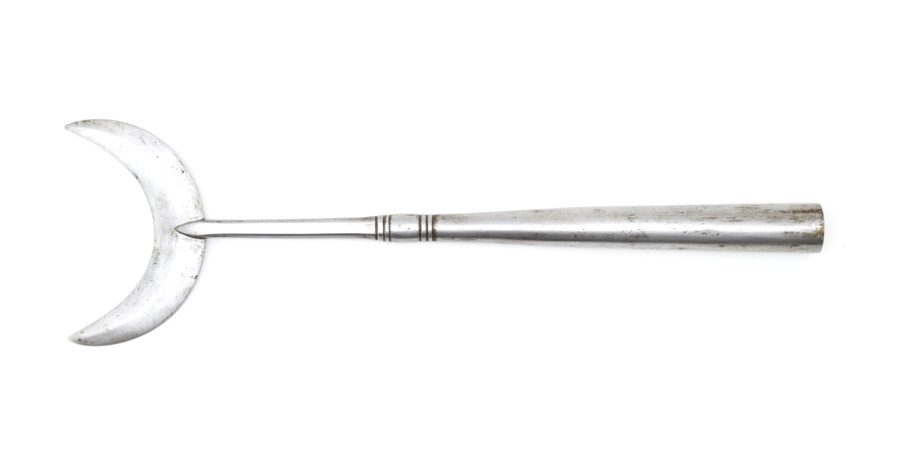
Yue ya chan, 月牙鏟 (crescent moon spade) is a unique polearm with a historical significance that can be traced back to the Song Dynasty. The famous Shaolin version known as the monk’s spade typically had a crescent blade on one end and a shovel-shaped blade on the other, an evolution that occurred due to the need for a weapon that is also a multifunctional tool for digging, cutting leaves and branches, and burying the dead.
- Design: Has a tip shaped like an upward crescent moon
- Other names: Yang yue dao (仰月刀 / upward crescent blade)
4. Hu cha (Tiger Fork)
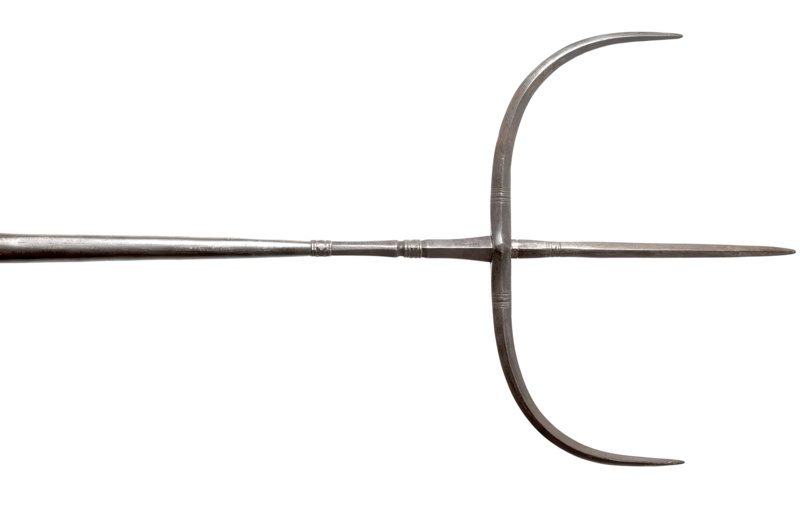
Hu Cha, 虎叉 (tiger fork) is believed to have been developed in Southern China against tigers and other large animals that posed a threat to local communities. Eventually, it became a weapon wielded by Chinese soldiers, guards, patrol officers, and militia. There are also several fork- or trident-type weapons in the Chinese arsenal.
- Design: Trident shape (three-prong metal head on a shaft)
5. Ge (Dagger-Axe)
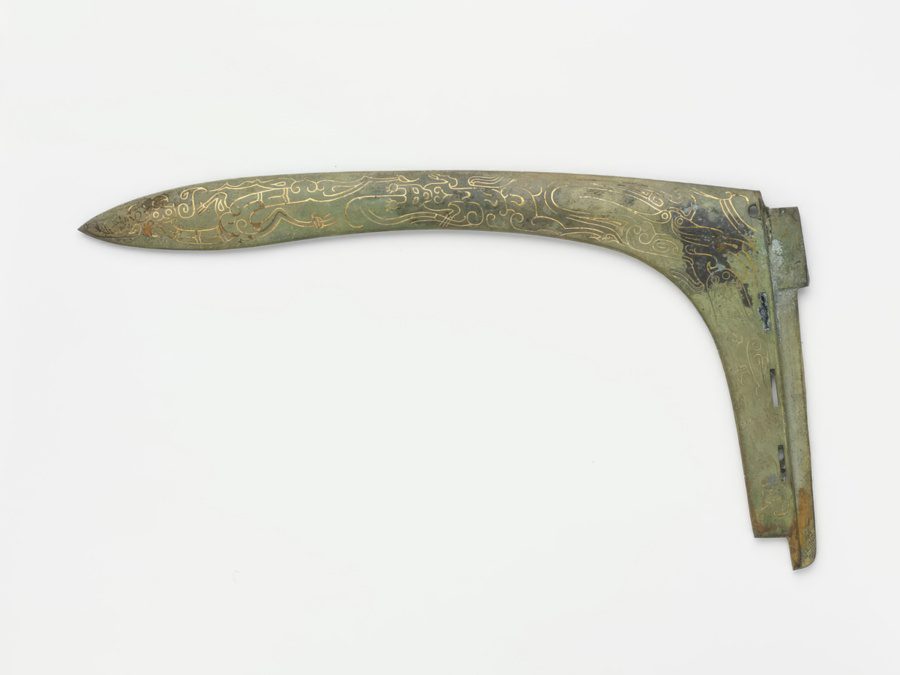
The ge, 戈 (dagger axe), designed for hacking and swinging at enemies should not be confused with the halberd. Having emerged long before chariots or the cavalry, it is believed that it was not originally designed for dragging down a chariot passenger or mounted warrior.
The ge was a weapon unique to China, widespread from the Stone Age to the Zhou dynasty.
- Design: A blade (which could be as long as that of a spear) fixed perpendicularly to a shaft.
6. Ji (Halberd)
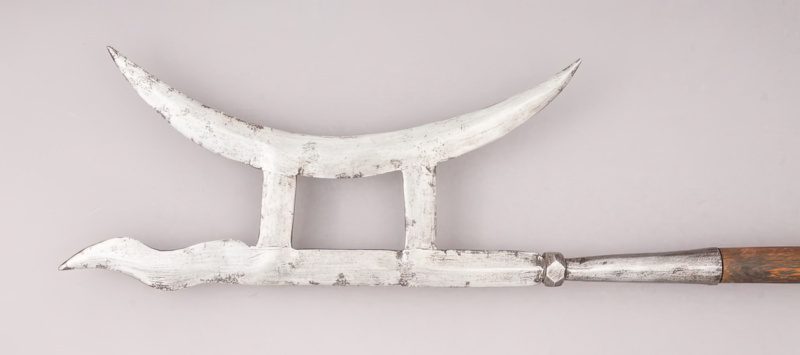
Although ji, 戟 is the standard term for halberd, the ancient Chinese halberd did not resemble the medieval European halberd. Early versions of ji were essentially a ge (dagger axe) with an additional spearhead mounted on top. Some variants even had two or three dagger axes.
The Tang dynasty ji, sometimes known as a half-trident, featured a curving upward blade instead of a horizontal one, making it effective for parrying incoming blows.
- Design: Varies, typically a spearhead paired with a crescent-shaped axe blade, mounted on a long shaft. Other variants such as shuang ji, 雙戟 (double ji) had two crescent-moon blades on both sides.
7. Podao

Another type of Chinese glaive is the podao, 朴刀, featuring a cleaving blade with a flat tip. It gained the name zhanmadao during the Ming dynasty, as it was a widespread weapon for chopping horses’ legs during battle.
However, the term “zhanmadao” also referred to a wide variety of Chinese weapons, including the double-edged sword jiàn (劍) and the two-handed saber of the Qing dynasty.
- Design: Cleaving blade with a flat tip
- Other names: Zhanmadao (斬馬刀, horse-cutting blade)
8. Piandao
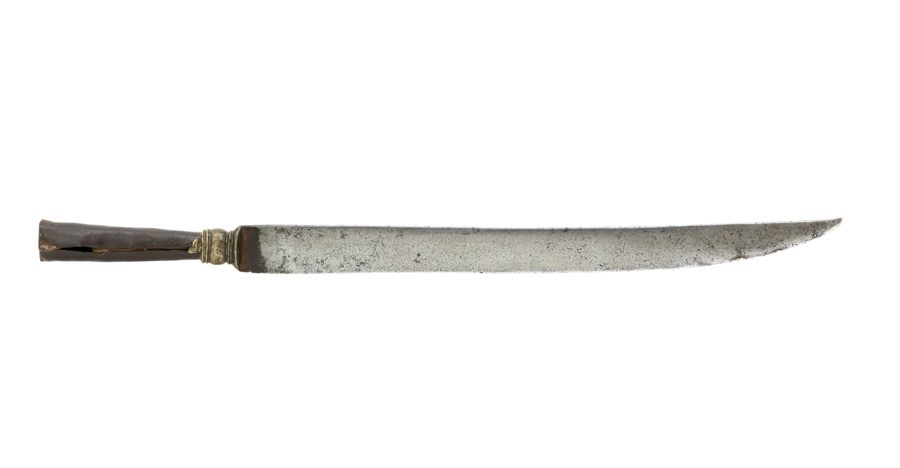
Similar to the Japanese naginata’s design, the Chinese piandao, 片刀, should not be confused with the Qing saber biandao, 扁刂. The piandao polearm was among the issued weapons to the Green Standard Army who served as peacekeepers and auxiliary troops.
- Design: Slender, curved blade tapering to a sharp point
